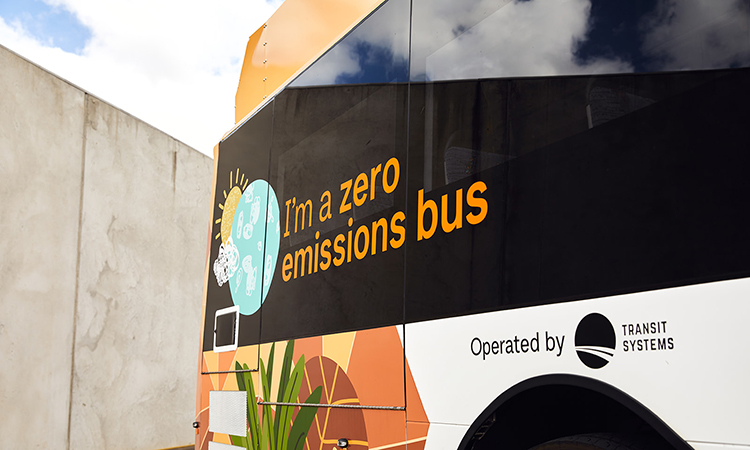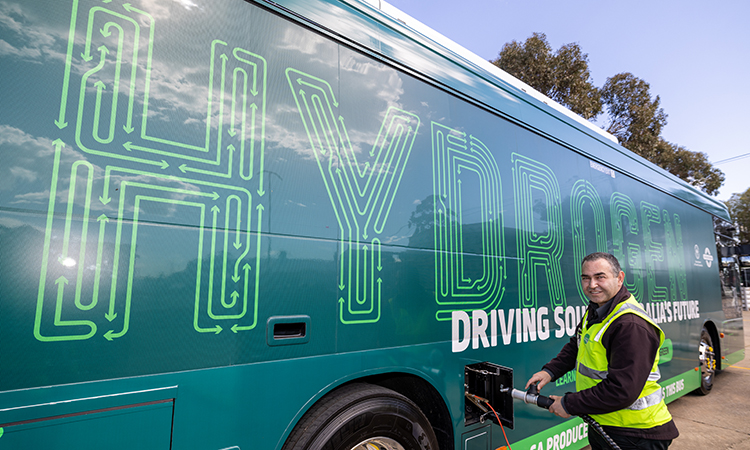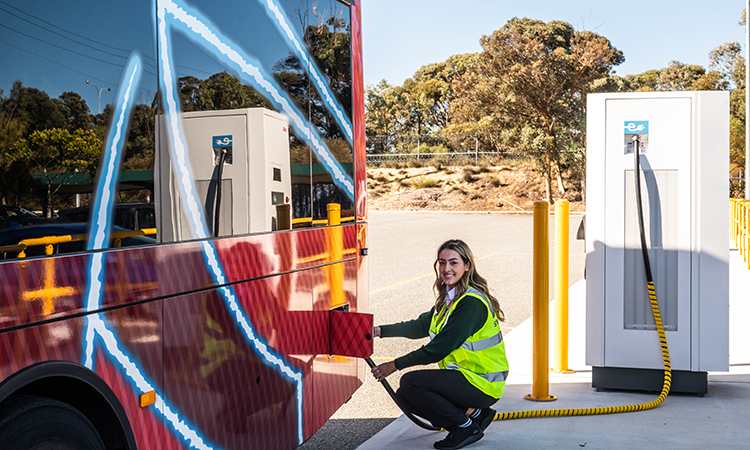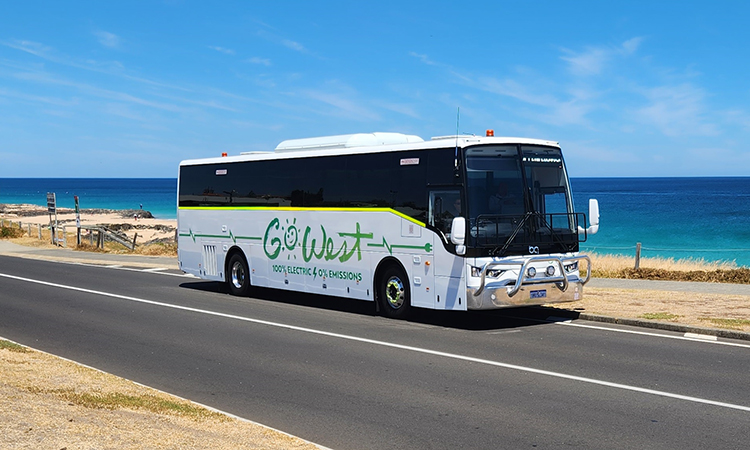Paving the way to greener cities with a sustainable transit revolution
- Like
- Digg
- Del
- Tumblr
- VKontakte
- Buffer
- Love This
- Odnoklassniki
- Meneame
- Blogger
- Amazon
- Yahoo Mail
- Gmail
- AOL
- Newsvine
- HackerNews
- Evernote
- MySpace
- Mail.ru
- Viadeo
- Line
- Comments
- Yummly
- SMS
- Viber
- Telegram
- Subscribe
- Skype
- Facebook Messenger
- Kakao
- LiveJournal
- Yammer
- Edgar
- Fintel
- Mix
- Instapaper
- Copy Link
Posted: 8 February 2024 | Michael McGee - Transit Systems | No comments yet
Transit Systems takes us on a deep dive into hydrogen and electric bus capabilities, the value of collaborations and partnerships, and why better network planning is the most efficient form of immediate emission reductions.


Credit: Transit Systems
As urbanisation continues to rise, cities face a pressing need to address traffic congestion, reduce emissions and enhance overall sustainability. Mass transit solidifies its place on the agenda as a critical solution, offering an efficient means of commuting while mitigating environmental impact.
Transit Systems CEO Michael McGee said that the company is spearheading change through the integration of innovation, collaboration and strategic network planning.
Embracing all evolving and emerging technologies allows for a diverse and comprehensive approach toward achieving zero-emission”
“We’re technology amenable – we’re exploring all options including hydrogen and electric buses, which is emphasised through government partnerships and better network planning, ultimately encouraging more people to choose public transport for a greener future,” he said.
McGee added that exploring zero-emission trials is crucial for a sustainable future, and both hydrogen fuel cell buses and electric buses play significant roles in this transition.
“Our government partners are invested in trialling a whole ecosystem of technology for better environmental outcomes.
“Each technology offers unique advantages: electric buses excel in shorter routes and urban settings, while hydrogen buses boast longer ranges and quicker refuelling (with end-state infrastructure), making them more suitable for heavy-duty and longer-distance applications.
“Embracing all evolving and emerging technologies allows for a diverse and comprehensive approach toward achieving zero-emission, catering to various operational needs while contributing collectively to a cleaner environment,” he said.
Hydrogen-powered buses: Pioneering sustainable transportation
Innovation is a pathway, and hydrogen remains an evolving contender”
Hydrogen-powered buses, even with the considerations of brown (coal) hydrogen and grey (gas) hydrogen are a cleaner alternative to traditional diesel buses. Hydrogen fuel cells produce electricity through a chemical reaction between hydrogen and oxygen, emitting only water vapour as a by-product. This innovative technology presents a promising solution for reducing greenhouse gas (GHG) emissions in the transit sector, and we are still in discovery mode for what is possible. Innovation is a pathway, and hydrogen remains an evolving contender.
The benefit of efficiency and range
One key advantage of hydrogen-powered buses is their impressive efficiency and range. These buses can cover longer distances on a single fill of hydrogen compared to traditional electric buses. This extended range makes them suitable for routes that may not be feasible with electric buses alone, providing a versatile solution for diverse transit needs, which is a key consideration in the Australian landscape.


Credit: Transit Systems
Refuelling infrastructure appeal
Transit Systems is continually investing in hydrogen-powered bus research, including the evaluation of end-state refuelling infrastructure. These stations (potentially public and private) enable quick refuelling, ensuring that buses can maintain regular schedules without prolonged downtime. At the forefront of this green initiative in Australia is Hydrogen Park South Australia, a pioneering collaboration between the Government of South Australia and the Australian Gas Infrastructure Group. This partnership has birthed Australia’s largest electrolyser, supplying green hydrogen to power the local gas network and Transit Systems’ hydrogen buses.
Assessing environmental impact
Adopting hydrogen buses represents a crucial step towards achieving sustainability goals and improving air quality”
Hydrogen-powered buses contribute significantly to reducing air pollution and dependence on fossil fuels. As cities grapple with the environmental consequences of transportation, adopting hydrogen buses represents a crucial step towards achieving sustainability goals and improving air quality for residents. The key remains getting more people on-board mass transit solutions.
Electric buses: Driving towards a greener tomorrow
Electric buses have gained popularity as a sustainable alternative to traditional diesel buses, leveraging advancements in battery technology to power public transportation. Modern electric buses utilise lithium-ion batteries that store and release energy to power the vehicle. These batteries have seen substantial improvements in energy density, charging speed and overall performance, making electric buses a viable and attractive option for mass transit partners aiming to electrify their fleets.
Charging infrastructure amps up
One of the challenges for electric buses lies in developing a reliable charging infrastructure. Transit Systems is actively working on assessing and installing charging stations at bus depots, terminals and potentially along routes to ensure seamless operations. Fast-charging technologies will further reduce downtime, allowing buses to recharge during layovers or driver breaks.


Credit: Swan Transit
Cost efficiency with electric energy
Transit Systems is committed to establishing long-term cost savings through reduced maintenance and fuel expenses with electric buses, which adds to the zero-emission appeal of electric buses. The simplicity of electric drivetrains, with fewer moving parts compared to traditional engines, results in lower maintenance costs over the lifespan of the buses.
Partnerships and collaboration create opportunities
Government partnerships play a pivotal role in accelerating the adoption of environmentally friendly transit options, and Transit Systems is a proud partner when it comes to deploying more sustainable mass transit. Collaborating with local, state and national governments and agencies to secure financial incentives and grants that support the purchase of hydrogen and electric buses is a critical element to establishing blueprints, just as Transit Systems has done with the largest electrified depot in Australia, at Leichhardt, New South Wales (NSW). This project saw a state and federal collaboration to generate a scaled electric infrastructure outcome, the first of its size and scope in Australia. These incentives could also include subsidies, tax credits and grants aimed at making sustainable transit more economically viable for agencies and also in encouraging passengers to get on-board.
Government sets the standard
In November 2023, Go West, part of Transit Systems, successfully trialled the first private commercial electric coach to operate in Western Australia (WA). The $600,000 coach was successfully trialled before being added as a permanent addition to the fleet.
The coach services South 32’s Worsley Alumina operations, providing zero-emission transport for mining employees from Bunbury to Collie. While there are electric government transport buses in WA, Go West is the first WA company to invest in a private commercial electric coach in the state.
The 53-seater coach has industry-leading safety features, including seatbelt detection systems, eight CCTV cameras in and around the bus, a fire suppression system, tyre pressure monitoring system and collision alert system.
“Innovation is contagious, and our government partners are setting the benchmark for what is possible, which inspires and propels the private sector forward,” said McGee.


Credit: Go West
Regulatory support on the dashboard
Governments can further drive change by implementing and enforcing regulations that encourage the transition to cleaner transit options. This can involve setting emission standards for public transportation fleets, establishing green procurement policies and incentivising transit agencies to prioritise sustainability in their operations.
“Innovation trials have a profound impact on the community, and into the private sector, and regulatory support can further encourage the conversation and build public awareness around the large-scale impacts of more sustainable mass transit,” said McGee.
Research and development funding
To spur innovation in zero-emission technology, government-allocated funding for research and development initiatives – like the Australian Renewables Energy Agency (ARENA) and Transport for New South Wales (TfNSW) Next Generation Electric Bus Depot at Leichhardt – will set new benchmarks.
These investments contribute to the creation of more efficient and sustainable public transportation solutions, fostering a collaborative environment between government entities, research institutions, technology partners and transport companies.
Attractive route optimisation
Transit Systems leverages data analytics and modelling tools to analyse passenger demand, traffic patterns and demographic information to make informed decisions”
Efficient network planning is crucial for the success of any transit system – for value and return on investment, but also to increase the attractiveness of the mass transit services and drive patronage growth by creating an interconnected network of services that produces a convenient and efficient way to move about a city. By optimising networks, agencies can ensure that buses serve high-demand areas, reduce travel times and minimise operational costs, while maximising appeal for customers. Transit Systems leverages data analytics and modelling tools to analyse passenger demand, traffic patterns and demographic information to make informed decisions about route planning, using global experience with local market knowledge to build the most effective solution; assisting our government clients to evaluate services on a like-for-like basis, categorising service types to really understand the strengths and weaknesses of individual bus routes.
“Getting more people on-board mass transit should be every government’s goal – there is no faster way to decarbonise a city than providing attractive mass transit with intelligent network planning,” said McGee.
Intermodal connectivity is key alongside technology
Transit Systems strives to create seamless connections between different modes of transportation, known as intermodal connectivity. This involves integrating buses with other transit options and trunk services, such as trains, trams and bike-sharing services. A well-connected and integrated transit network encourages more people to use public transportation for their entire journey, reducing reliance on private vehicles.
Technology integration for a seamless experience
Advancements in technology play a pivotal role in enhancing the overall transit experience. Transit Systems is incorporating real-time tracking, mobile ticketing and smart infrastructure to improve the efficiency and accessibility of public transportation. These technologies not only make transit more user-friendly, but also contribute to increased ridership and allow transport partners to better predict and plan for peak and off-peak usage.
Community engagement is central to success
Successful solutions actively engage with the local community to understand the needs and preferences of residents”
Successful solutions actively engage with the local community to understand the needs and preferences of residents. Public input is crucial for effective network planning, ensuring that transit services align with the demands of the local population. Town hall meetings, surveys and community forums provide valuable insights that shape the development of transit networks, and we proudly collaborate with departments and local ministerial offices to make sure that the local solutions are servicing the community.
“We are making significant strides towards a sustainable and efficient future in the mass transit landscape, and it’s an exciting time to be a partner of choice in the landscape.
“The integration of hydrogen and electric buses, coupled with strong government partnerships and strategic network planning, positions public transportation as a cornerstone in reducing emissions and building greener cities.
“By prioritising innovation, collaboration and community engagement, Transit Systems can continue to evolve, inspiring more individuals to choose public transport as the most effective way to navigate urban landscapes while contributing to a healthier planet,” said McGee.


Related topics
Air Quality, Alternative Power, Mobility Services, Public Transport, Sustainable Urban Transport
Related modes
Bus & Coach
Related cities
Western Australia
Related countries
Australia
Related organisations
Transit Systems
Related people
Michael McGee








